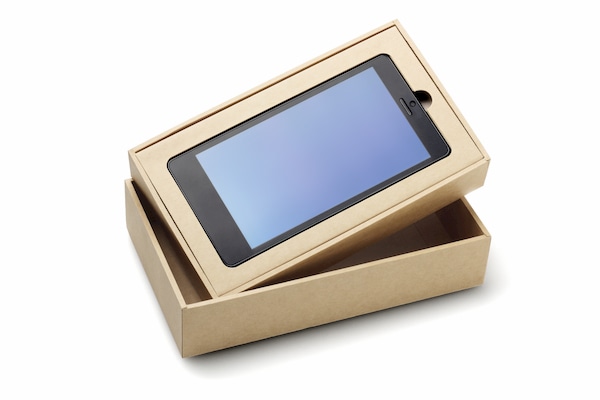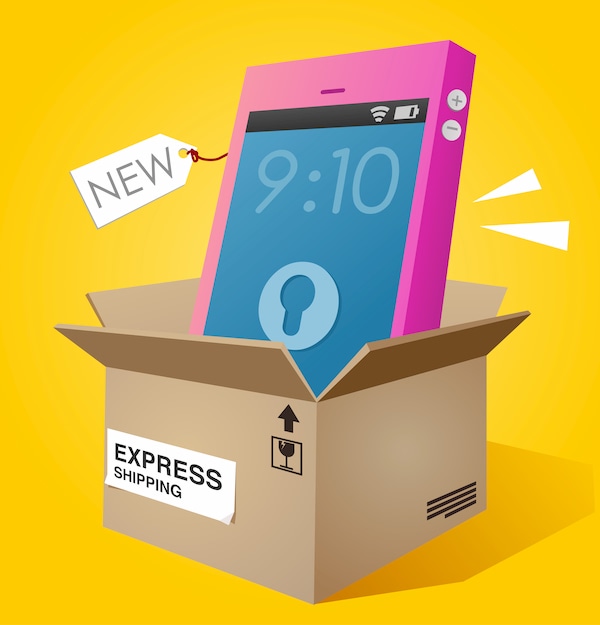Looking for Smartphone Recycling near you? Give Us a Call or Click Here!
These days, thin is in — and that’s not a reference to fitness centers and weight loss clinics.
For the past several years, the designers and manufacturers of smartphones have been committed to a new manta: “thinner is better.” The days of bulkier smartphones appear to be over, and today’s innovation is making electronics that get thinner and thinner. Some of the most recent high-end Android smartphones come with particularly extreme thinness for those consumers who like everything to be compact.
The New Challenge of Smartphone Recycling
But while some consumers think thin is in, and others still prefer a few extra millimeters of padding, this design trend has created challenges for companies that recycle electronic devices, including smartphones.

The recycling of e-waste is a critically important task, because if these devices end up in landfills, they pose potentially significant environmental hazards because of the toxins contained within them. E-Waste recycling allows the metals and other usable parts within them to be used to make new products, which helps hold down production costs.
Smaller Designs Break During Dismantling
Still, the problem of irresponsible e-waste disposal could get worse as consumers continue to drive up sales of paper-thin tech devices. Researchers say that the slimmer and more compact electronics are, the harder it is to take them apart for recycling.
Design trends are now believed to play a growing role in the problem of e-waste, since thinner tablets and phones with fewer components are harder to dissemble and are increasing the cost of recycling.
What’s Driving the Trend Toward Thinner Smartphones?
One factor clearly driving the trend toward lighter and thinner products: sales. Take, for example, the thinner and lighter iPhone 4, which completely blew the iPhone 3Gs sales out of the water.
Apple has found success by making their products more mobile, which has meant lighter and thinner. The sales tell the story: manufacturers that make lighter versions see higher sales over thicker and heavier models.

Whatever the reasons why consumers want this – a desire to have a phone that doesn’t feel heavy while they’re using it, having one that doesn’t feel tight in their pocket, or simply enjoying the feel of a sleek phone in their hand – the designs appear to line up with what consumers are asking for.
Smaller Phones Also Mean Smaller Batteries
Of course, not all smartphone owners have welcomed the trend. The iPhone 6, Samsung Galaxy A7, and Huawei Ascend P6 are amongst the thinnest mobile smartphones available; the P6 is a paper-thin 6.2 mm. But critics have argued they also have a smaller battery capacity. Those who don’t carry a charger with them, and want a long battery life, are quick to note that thicker phones allow for the use of a thicker battery – up to 20 percent more capacity, or 2 to 4 hours of additional use time.
But while the debate over the “thinner is better” devices continues, there’s less debate on another matter: how challenging it is to recycle these extra thin devices.
Why are Thin Smartphones Harder to Recycle?
As Americans get rid of millions of electronics devices every year, all too often simply by putting them out with their regular trash, electronics recycling has proven to be the clearest and most beneficial solution. Recycling a laptop, tablet, smartphone, or other e-waste not only keeps it out of landfills — where it could harm the environment — but also allows the individual parts within these devices to get reused. It’s a win-win situation.
But a report by Sara Behdad, a product design analyst at the University of Buffalo, has suggested that the e-waste problem may get worse as technology companies stick to the course of creating thinner smartphones.
For Example, Thinner Tablets and Phones Are:
• Harder for recyclers to take apart;
• Requiring longer manual labor because thin phones can’t be taken apart automatically;
• Not always valuable to e-waste recyclers, because there are not enough recyclable materials within them.
Still, the environmental challenges posed by this trend haven’t gone unnoticed.
For example, there are advocacy groups and nonprofits urging technology companies to make it easier for people to repair devices like the iPhone, so those products are not designed solely to be replaced, but repaired. Several states have even proposed “right to repair” legislation to require devices to be made so the owners can get them repaired.
That way, they last longer, rather than having to be repeatedly replace because they’re suddenly obsolete.
The Drive For ‘Green Products’
Other states are eyeing ways to require tech companies to build products that follow clear repair and recycling standards – rather than putting the emphasis solely on the look of the device. It’s a push to create more “green products,” which are less likely to contribute to long-term hazardous waste problems.

States also want the tech companies to understand that when products reach the end of their life span, they need to be responsibly recycled. The question moving forward is whether that will eventually mean sacrificing those sleek designs that customers have become accustomed to.
The Environmental Risks Remain Real
And there’s no question there are major global environmental issues if this challenge isn’t addressed. E-waste from discarded electronic gadgets and electrical appliances has reached severe levels in East Asia, and now poses a growing health and environmental threat there, researchers say.
What Nations Are Taking Action?
A recent study by the United Nations University found that every country in the region experienced massive increases of e-waste between 2010 and 2015, totaling 12.3 million tons in 2015 alone.
Governments there are now working on laws governing the management of electronic waste, but only South Korea, Taiwan and Japan have had recycling systems in place for decades.
The study identified a series of health problems, including infertility, childhood development problems, impaired lung function, liver and kidney damage, inheritable genetic damage and mental health problems as being among the problems connected to the leaching of heavy metals like cadmium, lead, and mercury into soil and waterways.
Conclusion
Whether the concern about thin smartphones and the challenges for e-waste recyclers get addressed by the tech companies or the state governments remains to be seen, but the issue is likely to stay in the spotlight.
In the meantime, there’s no question that we all have a role to play when it comes time to replace any of our electronics devices. Quite simply, the smartest and most responsible thing to do is to ensure those older devices are not ending up in landfills, and go to electronics recycling firms instead.
Great Lakes Electronics Corporation has spent years performing environmentally friendly recycling of electronic products, disassembling them into component parts. The ones that still have value are sold for reuse, while other parts are used for metals recovery, and everything is recycled.
Contact Great Lakes Electronics today at 888-392-7831 to learn more and to request a quote.

